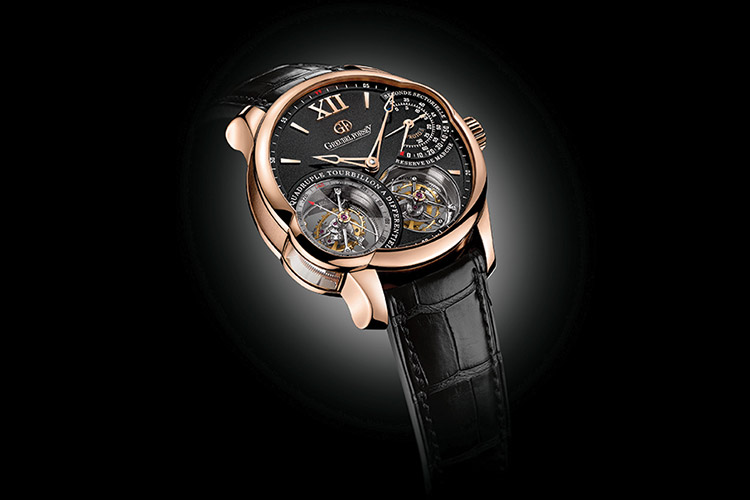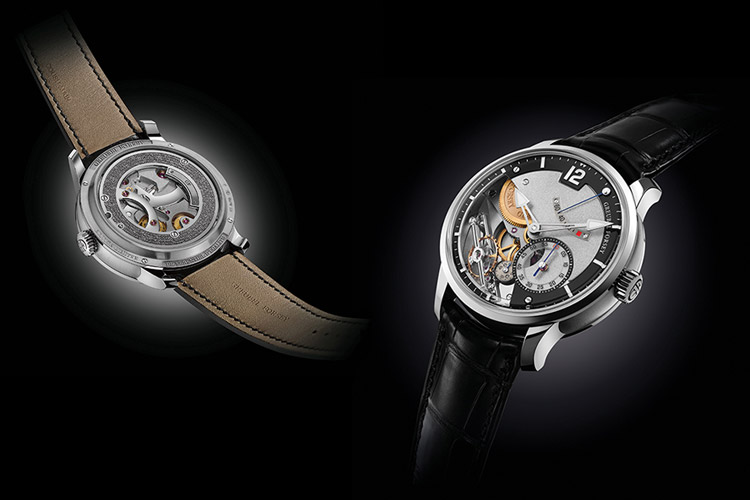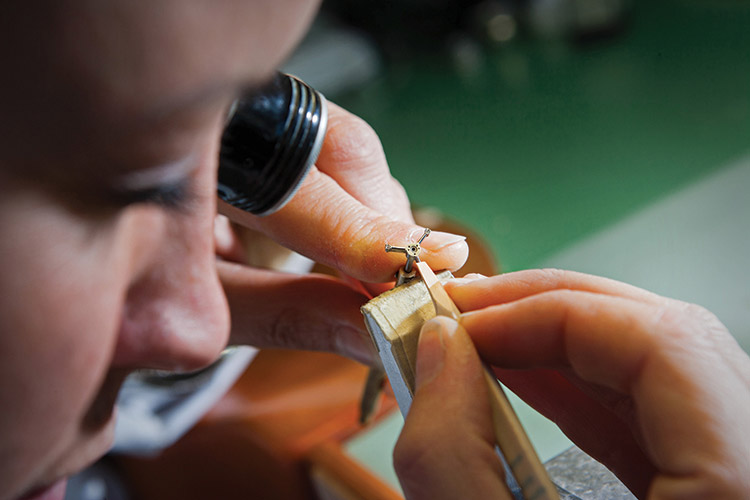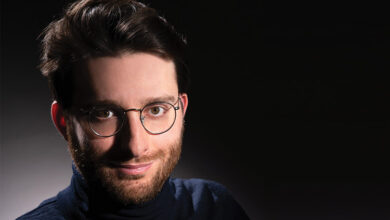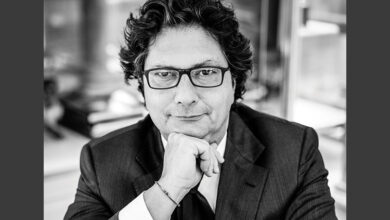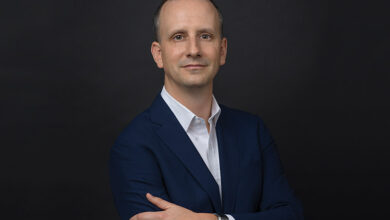
Stephen Forsey, Co-founder of Greubel Forsey, found the time to sit down with us for a chat during a recent visit. Read on to find out how the brand has been able to create amazing horological creations such as the Différentiel d’Égalité and the Quadruple Tourbillon…
Can you tell us what precision has been achieved with the new calibre in the Différentiel d’Égalité?
Greubel Forsey has been very interested in the question of how to get constant smooth energy to the escapement. The Différentiel d’Égalité differs from a constant force device because a constant force device is in the escapement and works in a different manner. We wanted to intervene before the escapement and in that way provide a smooth power delivery. When the main spring barrel in a mechanical watch is fully wound, it is full of energy, which gradually drops down over the hours. As lesser energy goes to the escapement, the balance wheel is moving slower and the timekeeping changes. So, if we can keep the flow of energy to the escapement consistent, then you have a better chance of keeping time accurately.
So how did you do that?
We built a secondary spring close to the escapement ring; it is a light one as the energy needed is very little. This is close to the escapement. What happens is that spring is rewound very often; here we have built it to rewind every second. This is something similar to the remontoire d’égalité, but we have revolutionised it. The traditional remontoire has a secondary spring, which may rewind every minute. In the traditional remontoire, the escapement itself has to unlock and release that rewinding. That means, every minute you are taking energy from the escapement to release and recharge the spring to feed it.
Robert Greubel and I wondered if there was a way to make the secondary spring rewind more often, but without using energy from the escapement to release it. We built in a differential, which is under the centre, and the differential has a spring in it. The energy that is coming in from above comes in at one place; the differential placed here, splits the energy to go in two directions. On one side it enables the spring – which feeds constant energy to the escapement – to rewind every second; you can see a small seconds there, a running seconds that feeds constant smooth energy. On the other side of the differential is the one that does the locking, releasing and rewinding; this is the one that gives the dead second indication. Because of the differential splitting the feed of energy, we have one that supplies constant smooth energy with the secondary spring and the other side of the differential is the one following the escapement. It saves energy because it is doing two things at the same time; it is following the advance and work of the escapement and that means that the rewinding is not influencing the escapement.
How does this affect the precision of the watch?
What is unique, new, and interesting about the Différentiel d’Égalité is the 30° angle of the balance wheel escapement, which is now characteristic of Greubel Forsey watches, but is very new in this particular context. To have a smooth energy delivery and the inclined escapement gives us a fantastic combination because the angle of the escapement means that when the watch is laid on a flat surface, and is horizontal, the balance wheel is at a 30° angle. When the watch is vertical, the balance wheel is also at an angle, now at 60°. So instead of having 90° angle between the balance wheel in a traditional watch, we have 30° and 60°, thus having 30° between it. We have evened out the differences of balance wheel amplitude. In a traditional watch, due to the horizontal and vertical positions, you would get a difference of 10 seconds; in the Différentiel d’Égalité, because of the 30° angle, we don’t have 10 seconds, it is only around 7 seconds. Also, because the movement in the Différentiel d’Égalité has a constant source of energy feeding it, the performance is completely consistent during the whole 60 hours whereas in a normal movement, the performance will change over time.
How much time did it take to develop the Différentiel d’Égalité?
The first version of the Différentiel d’Égalité we made was ten years ago; it was a one-off prototype that we showcased in Baselworld in 2008. The idea was not just to make a one-off product but to build know-how. We then built a second one, also an experimental watch, a wristwatch with Différentiel d’Égalité. They each gave us results that we built on; now, we have the third version of the Différentiel d’Égalité – which has a different speed of rewind and sundry other minor differences. This version is the one we have chosen to commercialise. This watch has taken around ten years of R&D, not just this version, but the whole project.
Why does the brand emphasise so much on finishing, with a large portion of your employees working in the finishing team?
Because it is fundamentally important to the brand; we have around 22 employees in the hand-finishing team. We have made hand-finishing and intricate movement decoration a pillar of the brand. We want to preserve these traditional arts of movement decoration, and so we decided that all our pieces would be hand-finished with this level of artistry. We differ from a big major brand because we employ 20-25 people to make 110 watches; in a bigger brand, that would translate to around 200 people to make 1,000 watches. You cannot find that many people skilled in this art. But this also means that the collectors know that they are getting a highly finished piece.
It is very hard to find people good at it because hand-finishing is not considered as a recognised profession and we have to invest a massive amount of resources to train our people, and then retain them after they are trained.
How were you able to work with sapphire for the Quadruple Tourbillon?
We have always wanted to create this kind of mechanical architecture of the movement; our Double Tourbillon 30° was a very 3-dimensional movement. The Quadruple Tourbillon, which we launched in 2008, has four tourbillons. We knew that it would be very difficult to explain the technical complexity of having four tourbillons in the space of two openings. We also had asymmetry in the case with the sapphire in the side; the sapphire is already complex, as it is already 3-dimensional to go with the body of the case and the double curvature.
We had four sapphire bridges to hold the four tourbillons but we opted to make them look like windows fixed in the dial, but in reality, these bridges were extremely complex, especially back in 2008. After numerous errors, we were able to make these sapphire bridges. We have the top surface, then we have a cylinder around it, and the feet to set; it is rather like a hat in the cross-section. It is a very complex piece to realise, especially because as the tourbillon is at different levels, the hour hand passes through a deliberate cut-out, a very complicated creation in 2008.
